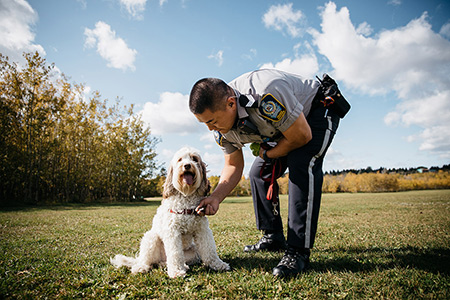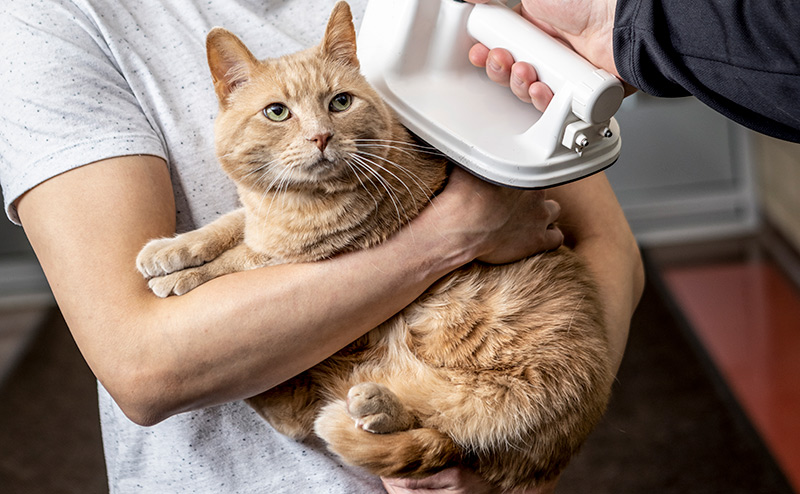Phase 1 public engagement was completed in November 2023.

The overall purpose of the new Animal Licensing and Control Bylaw is to establish a system of licensing and control for animals within the city while promoting responsible pet ownership.
Writing a New Animal Licensing and Control Bylaw
The City of Edmonton’s Animal Licensing and Control Bylaw 13145 is over 20 years old and required review and renewal to ensure it continues to reflect the most current animal practices within the city, including animal population management, husbandry and welfare and much more.
New Animal Care and Control Bylaw Approved
The Bylaw was presented to Council on August 19 and approved. Changes to the bylaw will go into effect on May 19, 2026.
Some Key Changes in the Bylaw
Dog attack complaints have increased by almost 15 per cent since 2020. The bylaw prioritizes public safety with stricter regulations and higher fines for dog attacks and bites. The seriousness of the injuries will be judged based on the Dunbar Dog Bite Scale, considered to be the industry standard.
New rules to protect animals from harm and health-threatening situations, including leaving pets alone in dangerous situations such as hot cars or extreme cold.
New regulations prohibit owned cats from roaming on private properties. Unowned and feral cats now have clear definitions, which will support programs such as Trap-Neuter-Return (TNR) and Return-to-Field (RTF) to help manage the stray cat population.
Trap-Neuter-Return involves trapping feral cats for the purpose of sterilization and vetting before returning them to the original location they were found. Whereas Return-to-Field is a shelter-based program that involves sterilizing and vetting unowned cats that are unclaimed by an owner before returning them to their place of origin.
Updating licensing categories for unique species under the livestock licence category, which includes bees and hens.
Licensing fees are increasing by one dollar a year over the next 3 years. This is the first increase in the past 5 years and will help pay for programs that support animal welfare in our city.
The bylaw will lower licensing fees for seniors and Edmontonians receiving income assistance, extending subsidies to all pets in the home. Licensing fees will be waived for local not-for-profit animal organizations to support the community work of adoption-focused rescue organizations.
Overview
The Animal Licensing and Control Bylaw Renewal Initiative reviews licence conditions, fees, fines and offences to ensure they continue to contribute to public safety and align with public views, emerging trends in animal care and the safe and healthy integration of animals into our communities.
On Monday August 11, 2025, the Bylaw Report was presented to the Community and Public Services Committee for a decision.
Public Engagement Activities
Phase 1
Phase 2
Phase 2 of public engagement was open from July 2-August 11, 2024. Input gathered from both phases of engagement, along with other City bylaws, policies, services, research and jurisdictional scan data informed the drafting of the new bylaw.
Phase 3
Council Reviews
On June 9, 2015, a report on the proposed changes to the bylaw was presented to the Community and Public Services Committee.
Phase 4
A New Bylaw
On August 11, 2025, the Animal Care and Control Bylaw Report was presented to the Community and Public Services Committee for decision and was approved.
Phase 5
New Bylaw Goes to Council
On August 19, City Council discussed the new Animal Care and Control Bylaw and approved its implementation for May 19, 2026.
Phase 6
Bylaw Goes into Effect
Changes to the bylaw begin to be communicated through public education/compliance and changes to internal City of Edmonton business processes.
The Purpose of the Bylaw
Animals in the city bring communities to life and pets are important members of many Edmonton families.
The Animal Licensing and Control Bylaw establishes a system of rules and definitions with respect to animals within the City. It helps clarify what animals can and cannot be kept as pets and what regulations pet owners must follow in caring for them.
It also regulates animals that can be kept for urban farming purposes and outlines fees, fines for infractions and how to manage stray populations.


